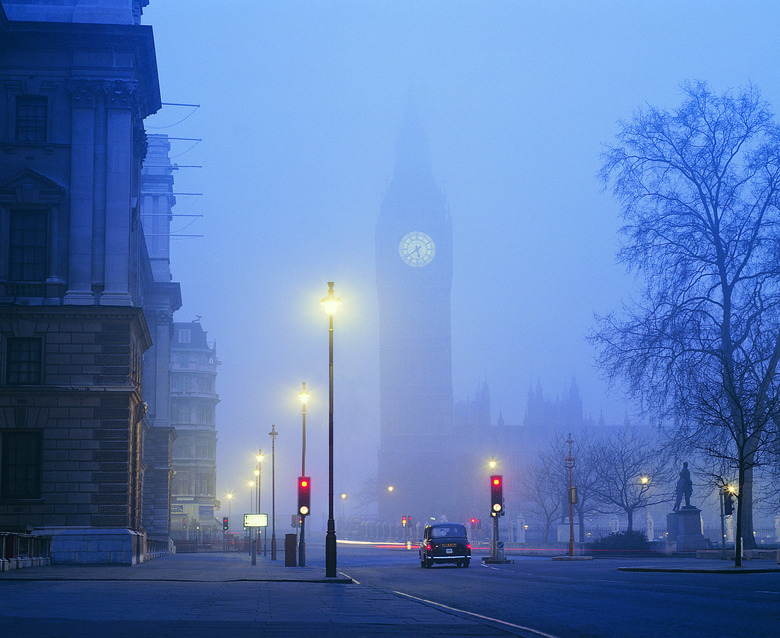Types Of Smog
Smoke plus fog equals smog; at least, that's how people in early 20th-century London saw it. The composition of smog is more complex than that, however, and there are two principal types. The smoky fog that plagues the people of London is different than the pollution that hangs over cities like Los Angeles, which is not a foggy place. The two types are known as London, or gray, smog and Los Angeles, or brown, smog.
The Original Industrial Pollution
The Original Industrial Pollution
The term smog was first used in an official way in a report to the Smoke Abatement League of Great Britain concerning the 1909 deaths of 1,000 people in Edinburgh and Glasgow due to heavy smoke and fog. The hub of the Industrial Revolution since the late 1700s, London had experienced steadily increasing occurrences of thick, poisonous air throughout the nineteenth century. In one instance, reported in 1813, the air was so dense that people couldn't see across the street. In the worst reported smog incident — which occurred in 1952 and killed four thousand people and some cattle — people in the Isle of Dogs couldn't even see their feet.
Pollution of the Rat Race
Pollution of the Rat Race
People in North America became used to images of cities like Los Angeles and Denver blanketed in a nasty haze of pollution in the 1960s and 70s, but the worst smog recorded in Los Angeles occurred in the 1940s. The smog in such cities, which aren't known for their fog, is different in composition from London smog, and is known as Los Angeles or photochemical smog. Scientists didn't realize it at first, but one of the primary sources of Los Angeles smog is automobile emissions. Atmospheric inversion layers play an important role in creating it.
The Poisons We Breathe
The Poisons We Breathe
London smog is also known as sulfurous smog. Because it's primarily the product of smoke from coal fires, it contains a high concentration of particulates, which bind with the fine water droplets in fog to create create a kind of dirty mist. Its main noxious chemicals are sulfur oxides. The primary chemical component of photochemical smog, on the other hand, is nitric oxide, which combines with oxygen to form nitrogen dioxide, the gas that gives Los Angeles smog its characteristic brownish tinge. Ozone, a corrosive gas with three oxygen molecules, and one that causes respiratory distress, is formed when these gases are exposed to sunlight.
Getting Better All the Time
Getting Better All the Time
The Great Smog of 1952 led to the Clean Air Acts of 1956 and 1968 in Great Britain that banned black smoke emissions and mandated widespread conversion to smokeless fuels. Since then, things have steadily improved, and there hasn't been a repeat of the same extreme smog conditions. Meanwhile, vehicular emission control regulations and increased emphasis on clean energy in California have had a positive effect on the air quality in Los Angeles, according to results of a 2013 study sponsored by the National Oceanic and Atmospheric Administration. According to the study, precursors to the chemicals that cause smog have decreased along with levels of ozone and peroxyacetyl nitrate, which stings the eyes.
Cite This Article
MLA
Deziel, Chris. "Types Of Smog" sciencing.com, https://www.sciencing.com/types-smog-7010/. 24 April 2017.
APA
Deziel, Chris. (2017, April 24). Types Of Smog. sciencing.com. Retrieved from https://www.sciencing.com/types-smog-7010/
Chicago
Deziel, Chris. Types Of Smog last modified March 24, 2022. https://www.sciencing.com/types-smog-7010/
